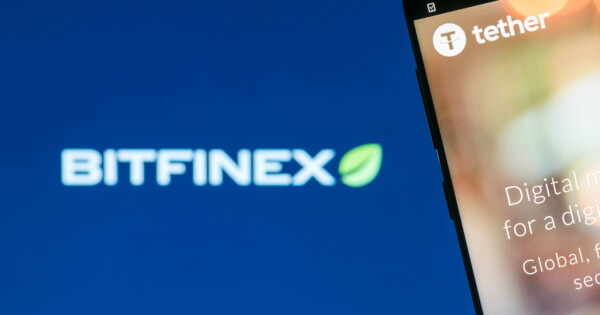tl;dr at bottom
Introduction
In 2023 the innovation that has caused the biggest waves in DeFi is indisputably liquid staking derivatives (or LSD for short...not that kind of LSD though). According to DefiLlama, the total value locked for LSDs across all chains is currently over $20 billion, which is about 53% of all the TVL in all of DeFi. More than half of all the money currently in DeFi is in LSDs.
The largest LSD protocol (by far) is Lido, which has a TVL of over $14 billion. This makes it not only the largest LSD protocol, but the largest protocol in all of DeFi in terms of TVL, nearly 3 times as large as the next largest protocol (MakerDAO). I hope this statistic alone is a big enough hint that this is a topic worth understanding.
My aim in this guide will not be to convince you to use LSDs (I don’t), nor to invest in the tokens of LSD protocols (I haven’t). Like all my guides, I simply want to give you a strong working knowledge of how things work and what things mean, for your own edification. This is a long read, but I think you will find it both info-dense, digestible, and rewarding.
Note: some L1s besides Ethereum (like Solana and Avalanche also now have LSDs, and they will presumably spread to every smart contract chain eventually, but since they were developed first on Ethereum and since the vast majority of the TVL in liquid staking derivatives is on Ethereum, I will focus on that ecosystem in my explanations.)
Background Knowledge
Only read this section as necessary based on your knowledge of these topics.
Ethereum Staking
Staking on a PoS chain is analogous to mining on a PoW chain, and it involves validating transactions and building blocks to secure the network, while also offering up a stake as collateral that you will be an honest validator. These validators earn newly minted coins called block rewards in exchange for their services.
To be an Ethereum validator, you need to stake 32 ETH. While you are a validator, you can’t do anything else with this ETH, so if there is something you could be doing in DeFi with your 32 ETH that would be more profitable than validating, you have an incentive to stop securing the network and instead do that other thing. When you stop being a validator and withdraw your stake, it can take significant amounts of time before your withdrawal is complete and you can access your funds. The time it takes is variable and depends upon how many other validators are in the queue to unstake. Depending on the demand, unstaking can take days or weeks.
It is also important to note that, prior to the Shanghai upgrade of April 2023, it was not possible whatsoever to unstake one’s ETH. This upgrade was the final step in the transition from PoW to PoS, and its most significant change is that it introduced the ability for validators to withdraw their stake.
Staking Pools
You might be wondering how it is that so many of us small-timers talk about staking small amounts of coins with a simple click when I’ve just made it sounds like staking requires big barriers to entry like 32 ETH and the know-how to run a validator node.
When people talk about staking without actually being a validator, they are typically talking about staking pools (or in some cases delegated proof of stake). Staking pools on Ethereum involve many people contributing small amounts in order to reach a total of 32 ETH or more, and then sharing the block rewards that the entire pool earns by being a communal validator.
The upside to staking pools is that they lower the barrier of entry for people to stake and contribute to the security of the blockchain. The downside is that these pools can become massive, leading to a centralization of stake that can make a single pool into a very powerful validator that could potentially attack the network if it got big enough. More about that later.
The Relationship between Security and Liquidity
As a general principle, the higher the portion of all ETH that is staked, the stronger security the network has. However, staked ETH is locked up; it is not part of the liquidity of the network’s DeFi economy. This is not only unfortunate for the individual staker who cannot use their staked ETH for any kind of productivity besides staking, but it is also a negative for the economic health of the ecosystem’s economy. In general, high liquidity economies are more stable, robust, and safe (from an economic point of view, not a blockchain point of view).
This creates a sort of unfortunate tension between network security and economic health. The greater the portion of all ETH that is locked as stake, the more secure the blockchain, but the less liquid the economy, and vice versa.
Liquid Staking Derivatives
This finally brings us to LSDs. LSDs were first innovated back in late 2020 by Ankr on Ethereum’s Beacon Chain. This is the PoS chain that was eventually merged into mainnet in September 2022, when Ethereum converted from PoW to PoS. Because the merge introduced LSDs to mainnet, they started to rise in popularity about a year ago. Their popularity increased significantly following the Shanghai upgrade in April of this year. This is because Shanghai allowed people who had already been staking ETH on the Beacon Chain (in some cases for over 2 years) to finally unstake their ETH, giving them the opportunity to restake it through an LSD protocol.
Different LSD protocols have slightly different mechanics, but I will use Lido as my example for this explanation, because it is by far the largest and most well-known. Later, once I’ve discussed its pitfalls, I will also talk briefly about one of the main alternatives, which is Rocket Pool.
When I decide to stake some ETH through Lido, I send them my ETH and they pool it with a bunch of other ETH and stake it. I can withdraw it at any time. Why can I withdraw it instantly when unstaking ETH takes days or weeks? Because, behind the scenes, Lido is only staking and unstaking in massive batches, which abstracts complexities like unstaking delays from the user, whose experience makes it seem like ETH can be staked and unstaked instantly.
So far, this just sounds like a regular, vanilla staking pool, right? So, what’s the difference? Well, in a non-liquid pool, you can’t use your ETH for anything while it’s in the pool. It’s not liquid. When you stake through an LSD protocol, you can essentially use your ETH for anything you want (lending, collateralization, liquidity providing, etc.) while it is staked and earning staking rewards.
How does this work? When I give, say, 1 ETH to Lido to stake, they give me 1 token called stETH (staked ETH) as a voucher for my actual ETH. This token is what I would trade back in later to withdraw my actual ETH. Anyone can redeem a stETH for an ETH from Lido. Because the stETH in my pocket basically represents my locked up ETH, it can be used to do many things in DeFi that ETH can do. You can lend it out for interest, or use it to collateralize a loan, or provide it as liquidity to a pool on an AMM to earn trading fees, or even trade it for something else. And all this is while your ETH is in a staking contract, earning you staking rewards. It’s like having your cake and eating it too. Eating from both ends of the burrito. You get to make the economic value of your ETH work for you in whatever way you see fit, while also gaining staking rewards on your ETH. This is the key principle of an LSD: it is a liquid representation of non-liquid ETH that allows you to effectively stake your ETH in a staking pool while wielding its value elsewhere.
This allows huge amounts of ETH to be staked without resulting in a constriction of liquidity.
Of course, risking your stETH is risking your ETH. If you lose your stETH due to whatever you were doing with it (from impermanent loss, or because it became liquidated collateral, or because you traded it for a meme coin, etc.), then whomever it went to is now the person who can redeem it for ETH.
Staking Rewards & Rebasing
It’s important to understand that the staking rewards for the staked ETH backing a stETH goes to whomever is holding the stETH (in proportion to how much of all existing stETH they are holding). So, when you give Lido ETH to stake for you, your address is not somehow connected to that staked ETH. Instead, the stETH they give you is your only connection back to your ETH. If you trade your stETH to someone else, not only can they redeem it for your ETH, but they can also hold it to accrue staking rewards from your (well, theirs now) ETH.
So, how do the staking rewards work? Well, Lido receives the actual ETH staking rewards for running the validators. Like all LSDs, they keep a cut (10% of the reward, I believe. I think some others are as low as 5%), and then they redistribute the rest to all the holders of stETH, proportionally. However, they don’t do this by minting and sending a bit of stETH to everyone’s wallets. There won’t actually be any transaction for your staking rewards. Instead, they use an algorithmic rebasing rewards system. Here’s how it works.
Once a day at 12 pm UTC, an oracle informs the Lido protocol of all changes to the staking pool (withdrawals and deposits) within the previous 24 hours, and then the stETH token automatically rebases itself slightly so that everyone’s stETH balance exactly reflects the staking rewards they are owed for holding stETH for the past day.
This is kind of like if you had $100 in your bank account and then it was announced that dollars now equal 99 cents. You still have 10,000 cents in your bank account, but now your dollar balance is $101.01, because 10,000/99 = 101.01. So, without anyone sending anything to your account, you now have about 1% more purchasing power. Now, in this analogy, that 1% gain would quickly be negated by the corresponding price inflation, but in the case of stETH rebasing, the increase in value is concrete, since you can always redeem stETH for ETH 1:1.
stETH Price and Depegging
I’ve mentioned several times that you can deposit 1 ETH and get 1 stETH in return, or redeem 1 stETH for 1 ETH. In addition to this, stETH is also traded freely in secondary markets according to supply and demand. The main place this is done is Curve’s stETH/ETH pool. These days, the price of stETH tends to fluctuate between 0.997 ETH and 1.002 ETH. The price is kept approximately pegged due to arbitrage traders. If ever stETH drops below the value of ETH, people will buy the cheaper stETH and immediately redeem it for ETH from Lido to make a profit (or vice versa), which would close the price gap.
However, stETH wasn’t always so closely pegged. In May 2022 when Terra collapsed, a cascading series of events caused stETH to depeg from ETH and fall as low as 0.94 ETH. It took over half a year to regain its peg. So, why did it depeg so badly and for so long if arbitrage traders could have just bought stETH as discount ETH? The important thing to understand here is that it was impossible to redeem stETH for ETH until the Shanghai upgrade this year, because Lido themselves could not unstake ETH until Shanghai. Because stETH wouldn’t be redeemable for ETH for another year, it wasn’t possible to arbitrage trade the pair yet (well, the faithful could have made a 1 year arbitrage play, but a 1 year delay causes an immense amount of arbitrage friction). This allowed the value of stETH to deviate from ETH for a prolonged period.
Since Shanghai, stETH has tracked ETH very closesly, which is to be expected due to the possibility of arbitrage. To see this for yourself, look up the price history of stETH on CoinGecko, and select ETH as the chart denomination. You will see that it has been very close to flat since April, but fluctuated significantly in its earlier days before Shanghai.
This doesn’t mean that stETH can’t ever depeg again. Arbitrage-based pegs are soft, and extreme conditions can cause them to fail. However, a depegged stETH isn’t actually a concern for a stETH holder so long as Lido always redeems stETH for ETH 1:1.
Downsides and Risks
One risk in holding an LSD rather than staking ETH directly is smart contract risk; you have to trust their code can’t be exploited. You also have to trust that the Lido DAO won’t rugpull by ceasing to redeem at 1:1 following a bad depeg.
Apart from personal risks, there is also one very major downside to Lido’s LSD system for Ethereum at large: centralization of stake. Because such an immense amount of ETH is staked through Lido, the small set of privileged validators that the Lido DAO curates represent a huge portion of validator power. If it continues to grow, this one DAO could eventually have the strength to start attacking Ethereum. So, while LSDs can be said to bring security by enticing people to stake their ETH while freeing up huge amounts of liquidity for the economic health of the ecosystem, it can also be argued that, due to the centralizing nature of Lido’s dominance, they currently bring an outsized amount of risk to Ethereum at large.
I have read that the Lido DAO and the Ethereum Foundation are working together to find way to mitigate this centralization effect, but I cannot remember where I read that, so take it with a grain of salt.
Alternatives to Lido
Lido has about 71% of all the value locked in Ethereum LSDs at the time of writing. The next largest is Coinbase Staked Ether, followed by Rocket Pool, Binance Staked Ether, and Frax. The list contains many, many more.
I would like to briefly talk about Rocket Pool, since it has long been considered the decentralized alternative to Lido.
The key difference between Rocket Pool and Lido is that Lido stake is spread among about 30 pre-approved validators, while Rocket Pool’s (comparatively small) stake is spread across upwards of 2,700 permissionless validators (these numbers are from May). Because of this, Rocket Pool is considered the most decentralized and trustless LSD protocol.
On the other hand, Rocket Pool’s APY is consistently lower than Lido’s, because Lido’s size and somewhat centralized nature afford it certain efficiency advantages.
The other main difference is that Rocket Pool’s LSD token (rETH) doesn’t use a rebasing system for rewards. Instead, they continuously increase the redemption rate for rETH to ETH above the initial 1:1 to reflect the staking rewards rETH has accrued relative to ETH. In other words, the value of rETH gradually grows relative to ETH, because Rocket Pool basically packages your rewards into the redemption rate itself. 1 rETH is currently worth about 1.085 ETH, which reflects the staking rewards Rocket Pool has produced.
Parting Words
Well, that’s about all I can think to teach you about LSDs. I hope you found this interesting, and that you feel armed with newfound knowledge!
tl;dr: LSD protocols, like normal staking pools, allow you to stake your ETH in a collective pool without having the full 32 ETH and without the serious staking/unstaking delays involved in solo staking. Unlike vanilla pools, LSD protocols also give you a voucher token to represent your staked ETH, which can be redeemed at any time for ETH 1:1. Because this token represents ETH, it carries the same economic weight as ETH, allowing you to use it in DeFi for any number of things, like lending, collateralizing loans, providing liquidity, or trading. This allows you to make your Ether work for you all while it is locked up earning you staking rewards. It’s like having your cake and eating it too. It allows the network to be secured by large amounts of stake while freeing up all that liquidity for the economic health of the ecosystem. However, the largest LSD protocol, Lido, is so dominant that its small amount of validators now wield an enormous amount of stake, leading to centralization concerns. Rocket Pool is the main decentralized and trustless alternative to Lido.
Ps: Shoutout to u/NaturephilicReaction who requested on multiple occasions that I write this guide. I hope it lived up to your expectations!
[link] [comments]

You can get bonuses upto $100 FREE BONUS when you:
💰 Install these recommended apps:
💲 SocialGood - 100% Crypto Back on Everyday Shopping
💲 xPortal - The DeFi For The Next Billion
💲 CryptoTab Browser - Lightweight, fast, and ready to mine!
💰 Register on these recommended exchanges:
🟡 Binance🟡 Bitfinex🟡 Bitmart🟡 Bittrex🟡 Bitget
🟡 CoinEx🟡 Crypto.com🟡 Gate.io🟡 Huobi🟡 Kucoin.

















Comments